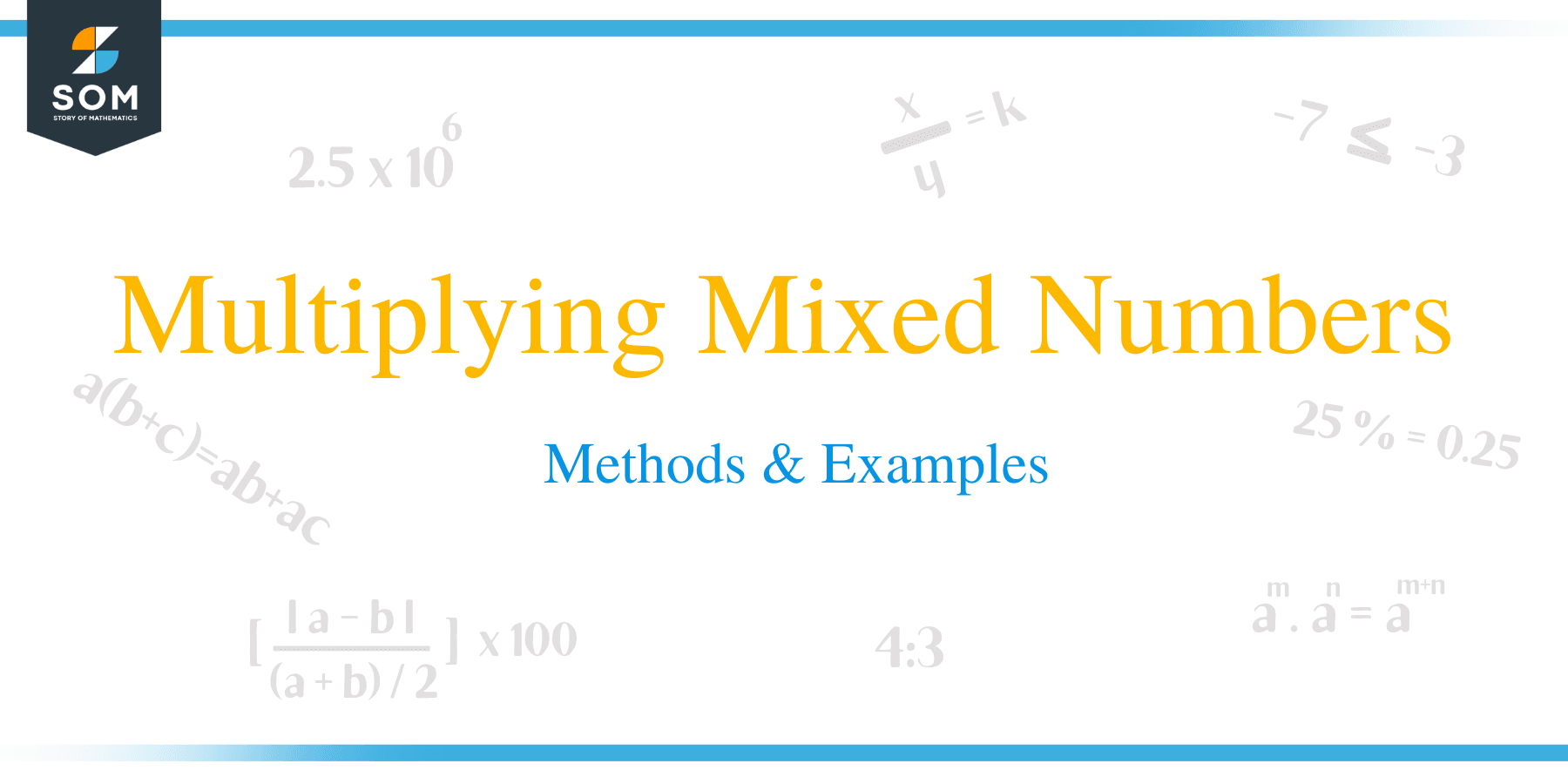- Home
- >
- Multiplying Mixed Numbers – Methods & Examples
JUMP TO TOPIC
Multiplying Mixed Numbers – Methods & Examples
 A mixed number is a number that contains a whole number and a fraction, for instance 2 ½ is a mixed number.
A mixed number is a number that contains a whole number and a fraction, for instance 2 ½ is a mixed number.
How to Multiply Mixed Numbers?
Mixed numbers can be multiplied by first converting them to improper fractions. For example, 2 ½ can be converted to 5/2 before the multiplication process. Below are the general rules for multiplying mixed numbers:
- Convert the mixed numbers to improper fractions first.
- Multiply the numerators from each fraction to each other and place the product at the top.
- Multiply the denominators of each fraction by each other (the numbers on the bottom). The product is the denominator of the new fraction.
- Simplify or reduce the final answer to the lowest terms possible.
Multiplying Mixed Fractions and Mixed Numbers
One method of multiplying mixed fractions is to convert them to improper fractions.
Example 1
3 1/8 x 2 2/3
Solution
- Convert each fraction to an improper fraction,
3 1/8 = {(3 x 8) +}/ 8 = 25/8
2 2/3 = {(2 x 3) + 2}/3 = 8/3
- Multiply the numerator and denominators,
25/8 x 8/3 = ( 25 x 8)/(8 x 3)
- In this case, common factors are at the top and bottom, therefore, simplify by cancellations,
= 25/3
- Convert the final answer to mixed fractions,
25/3 = 8 1/3
Example 2
1 4/5 x 5 3/8
Solution
- First change the mixed numbers to improper fractions
1 4/5 = (1 x 5 + 4)/5 = 9/5
5 3/8 = (8 x 5 +3)/8 = 43/8
- Multiply the fractions
9/5 x 43/8 = 387/40
- You either the answer as an improper fraction or convert it to a mixed number
387/40 = 9 27/40
Area Model Method
Multiplication of mixed numbers can also be done using another method called area model. This method is illustrated below:
Example 3
2 2/5 x 3 1/4
Solution
- Draw a model that has a region for both whole number and fraction number
| X | 2 | 2/5 |
| 3 | ||
| ¼ |
- Multiply each row with each column
| X | 2 | 2/5 |
| 3 | 2 x 3 =6 | 3 x 2/5 = 6/5 |
| ¼ | 1/4 x 2 = 1/2 | 1/4 x 2/5 = 2/20 = 1/10 |
- Add all the products in the table.
6 + 1/2 + 6/5 + 1/10
- Add the fractions
The L.C.M. of 2, 5 and 10 =10
Therefore, 1/2 + 6/5 + 1/10 = 5/10 + 12/10 + 1/10
- Add the numerators alone while maintaining the denominator
(5 + 12 + 1)/10
= 18/10 = 1 8/10
- Now add 1 8/10 + 6
= 7 8/10
- Simplify the fraction to its lowest terms.
= 7 4/5
